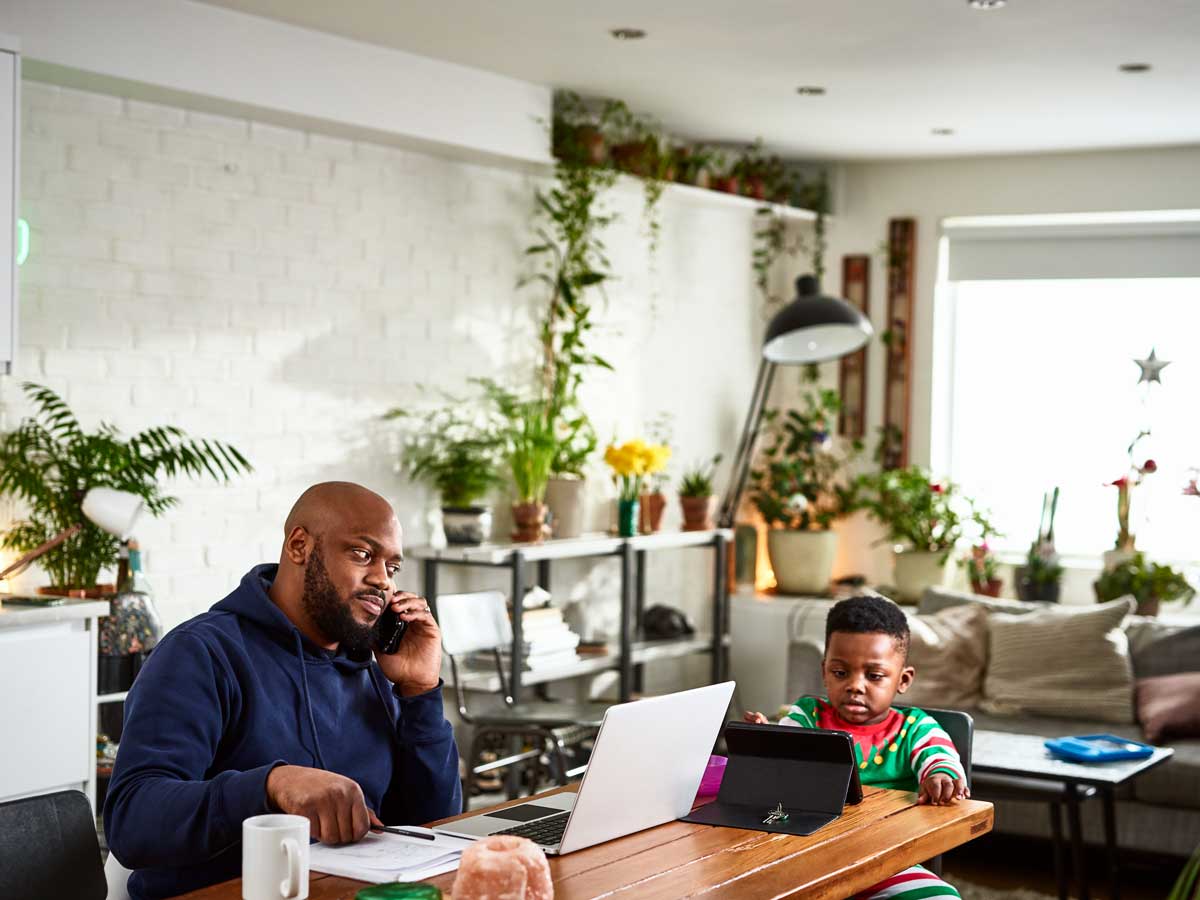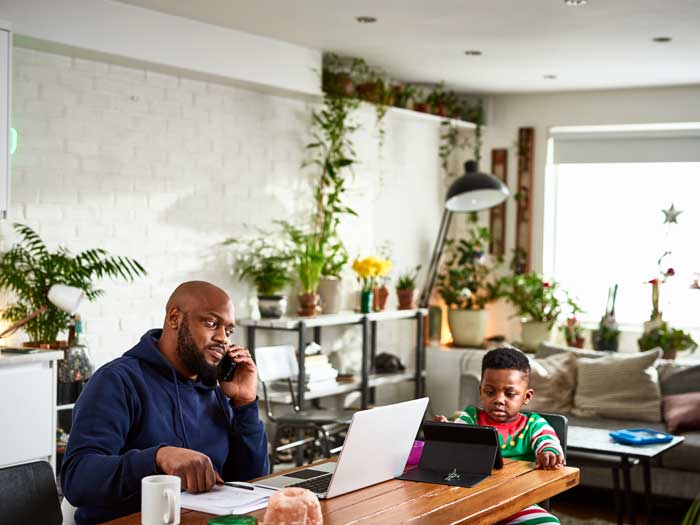
Kids in your isolation zone? 4 tips to share your workspace during COVID-19
 With the kids now at home, it’s necessary to be flexible and open to looking at things in a different way (Getty Images/10’000 Hours)
With the kids now at home, it’s necessary to be flexible and open to looking at things in a different way (Getty Images/10’000 Hours)
Amid the ongoing COVID-19 crisis, Canadian professionals aren’t the only ones working from home. Schools across the country have closed—perhaps for longer than first anticipated. With kids now at home, parents are tasked with the challenge of maintaining some level of work productivity while also meeting the needs of their children.
“There are a few really big challenges here,” says Robbin McManne, a parent coach and author based in British Columbia. “Having to handle multiple interruptions a day—it can be everything from a sweet little hug or needing a snack. Or it could be the kids fighting and you have to get up for the hundredth time. What if you’re in a conference call or you have a call with a client?”
Here are a few tips to help you work effectively when your children are sharing your workspace.
1) MAINTAIN A CONSISTENT SCHEDULE
A crucial aspect of working effectively from home is finding a schedule that works for you. During this unique period, it’s necessary to be flexible and open to looking at things in a different way, McManne says. “Can we work before the kids get up? Can we work a little bit after they’ve gone to bed?”
But equally important is a consistent schedule for your children, who have been yanked from the ordered environment of a classroom. This is true for parents who are working from home and even those who aren’t, says Jennie Kellerstein, a Toronto professional who is now home with her husband and four children.
“I think all kids benefit from predictability and routines—even more so during stressful times,” she adds. Every day, Kellerstein says, the whole family goes outside for a walk at 8:30 a.m. Then the kids begin school programming at 9 a.m.
“I make sure the kids have breakfast and they have time to relax,” she explains. “But then by about eight o’clock they know they have to get dressed and make their beds and set up their workstations for the day. It’s not easy because sometimes it takes some work to get out the door. But we find it really helpful; we come back home ready to start the day. It’s a predictable routine.”
McManne, too, is home with her two children, and recognizes the importance of a schedule.
“I have a day planner, and I can see what’s going to be for breakfast, what am I working on, what activity are the kids going to do,” she says. “So really just breaking up the day. Where are you going to fit in the activities for your kids?”
2) SHARE OR ADD RESPONSIBILITIES
For two-parent households, this is a time that might require a little extra co-operation. When work needs to get done, can you trade off household duties with your spouse?
“If you have a partner who is home, or who is also working from home, then perhaps you need to split the shift a little bit,” says Kellerstein. “[That way] you have a couple hours of completely uninterrupted time and then your partner has a few hours of completely uninterrupted time.”
Also, depending on the ages of your children, you can give them a bit more responsibility to help around the house. For example, Kellerstein says, “If you have a child who’s 10 or 11, you can give them more responsibilities to help look after a four- or five-year-old while you’re home for specific amounts of time.”
Your children might also feel empowered working on projects that helps others, including writing letters to neighbours or health-care workers.
3) ACCEPT AND EMBRACE THE SITUATION
Rather than feeling disheartened by the change to your work environment, try to accept that it’s an extraordinary situation.
“I think the main thing is that, if you’re working from home, you have to acknowledge that you’re not going to be able to do the same things as when you’re at the office,” says Kellerstein. “I think you’re going to set yourself up for failure if you expect, right from the get-go, that you’re going to be able to replicate your normal schedule at home.”
McManne even encourages parents to embrace the fact they’re the same professional they always were—just a little bit more human now.
“You may have a call where your kids interrupt you. You may have a video call where there is somebody behind you,” she says. “I think you can call it out and just say, ‘You know what, I’m like everybody else. I’m home, my kids are home, we’re doing our part’.
“That means that I don’t look the same necessarily, but I am the same professional.”
4) TALK TO YOUR KIDS ABOUT COVID-19
While you’re focused on your work productivity, your children are also facing a new normal. Adjusting to the evolving changes in daily life caused by the COVID-19 pandemic may lead your children to behave in challenging ways.
It’s important to remember that children look to adults for guidance on how to react to stressful events.
“Kids need security and they need safety from their parents,” says Kellerstein. “So if you’re communicating that you’re anxious and worried, then they will be anxious and worried as well.
“For young kids, if they have concerns, it’s usually because they want to know that they’re safe, and they want to know that you’re safe. Even for older kids, kids who are in their early teens, they like to know what you’re doing and what they can do. And then they feel empowered.”
Keep explanations age-appropriate, as suggested by the National Association of School Psychologists. For early elementary school children, provide brief, simple information and reassure them that adults are there to help them keep safe. For upper elementary and middle school children, help them separate reality from rumours they may be hearing. And, with high school students, you can discuss issues in more depth, and engage them about family plans and scheduling.
Talking to your kids about a crisis like COVID-19 is all about putting things in perspective for them, Kellerstein adds. If your kids hear that people are dying, let them know that it’s still very rare—even if they’re hearing scary things on the news or social media.
It’s also important not to have news shows on 24/7, cautions McManne.
“It would be easy to just have it playing in your living room all day,” she says. “I’d suggest you either get your fix in the morning or the 11 o’clock news. Not throughout the day because your kids will be worried. They’ll hear things they don’t understand.”
MORE COVID-19 UPDATES
Stay up-to-date with the latest news related to the accounting profession, including a compilation of external resources and online news articles.
Also, get expert tips on working effectively from home and learn how you can help small businesses survive during this crisis.